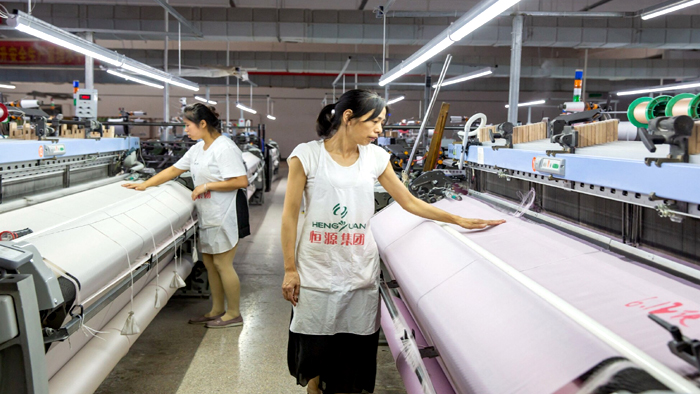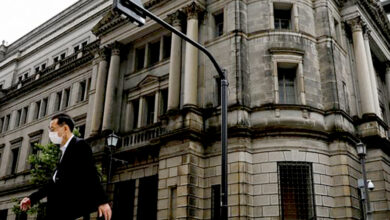COVID slows growth in China’s factory and retail sectors.

In November, China’s economy lost even more steam as factory output slowed and retail sales continued to fall. Both of these numbers were worse than expected and hit their lowest levels in six months because of rising COVID-19 cases and widespread virus curbs.
The data showed that the economy was getting worse, as lockdowns in many cities, a slowing real estate market, and weakening global demand all pointed to a rough road ahead. This was true even though Beijing got rid of some of the world’s strictest anti-virus rules after widespread and rare public protests.
Related: China’s growth forecast for 2023 has been raised by Morgan Stanley.
The National Bureau of Statistics (NBS) released data on Thursday that showed industrial output rising 2.2% from a year ago. This was less than the 3.6% increase that was expected in a Reuters poll, and it was a big drop from the 5.0% growth seen in October. It was the slowest growth since May, partly because of problems in Guangzhou and Zhengzhou, which are important manufacturing hubs.
Retail sales dropped 5.9% because the services sector as a whole was weak. This was also the biggest drop in sales since May. Analysts thought that the measure of consumption would fall by 3.7%, which would be worse than the 0.5% drop in October.
In particular, sales in the contact-heavy catering sector fell 8.4% compared to the same time last year. This was a bigger drop than the 8.1% drop in October.
In the meantime, the number of cars made went down by 9.9%. In October, it had gone up by 8.6%.
On Thursday, the data made investors less confident, which hurt the value of the yuan against the dollar.
Hao Zhou, the chief economist at GTJAI, said, “The weak activity data suggest that the policy needs to be eased even more to get the growth going again.” “The larger size of this morning’s MLF rollover is in line with the overall tone of easing policy.” “We also think that the rates for MLF will go down by 10 bps in the first quarter of 2019.”
Thursday, China’s central bank put more money into the banking system and kept the interest rates on medium-term policy loans, or MLF, the same. This was done to keep liquidity high.
The world’s second-largest economy has been hurt by its “zero COVID” policy. This is because tight controls on movement have made it harder to consume and make things. The country also has to deal with a drop in the value of its real estate, the possibility of a global recession, and political uncertainty.
According to calculations made by Reuters based on data from the NBS, property investment fell 19.9% from one year to the next. This was the fastest drop since the statistics bureau began collecting data in 2000.
Policymakers have helped the sector in almost every way possible, including with credit lines from banks, bond financing, and equity financing. However, analysts say that these changes haven’t been seen yet because home sales are still low.
Fixed asset investment grew by 5.3% in the first 11 months of the year, which was less than what was expected (5.6% growth) and less than the 5.8% growth seen from January to October.
Companies that were worried about their finances didn’t hire many people. In November, the number of people without jobs rose from 5.5% to 5.7%. Youth unemployment went down from 17.9% in October to 17.1% in November.
“December data could be even worse,” said Alicia Garcia-Herrero, chief economist for Asia-Pacific at Natixis. This isn’t because things are getting worse in China, but because the end of the tunnel is getting closer.
“I think that industrial production will drop a lot in December. This will happen right away after the door is opened. She said that GDP growth in the fourth quarter would be 2.8% instead of 3%.
State media reported on Wednesday that China has plans to increase domestic consumption and investment. This comes as policymakers face a number of problems after a sudden loosening of strict COVID-related restrictions, which is expected to lead to a rise in infections.
Related: China can’t get Arm’s chip designs because of U.S. and UK export controls.
Businesses and consumers would be hurt by that, and a weakening global economy would hurt Chinese exports.
China’s economy only grew by 3% in the first three quarters of this year, and that rate is expected to stay about the same for the rest of the year. This is well below the official goal of “around 5%,” which was set for the whole year.
All eyes are on the annual Central Economic Work Conference, which is held behind closed doors and is where Chinese leaders meet to set the economic agenda for the next year. Policy insiders and analysts say that they are likely to plan out more steps to stimulate the economy. They want to keep the economy growing and make sure that the sudden end of COVID-19 curbs doesn’t cause too many problems.
$1 is worth 6.9593 yuan in Chinese yuan.





